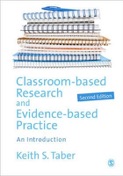Educational Research Methods

A site to support teaching and learning...

Participatory action research
Some action research studies of a collaborative nature are sometimes described as examples of participatory research.
“A key characteristic of AR as generally understood is that AR is carried out by practitioners... On this understanding, an external researcher coming into a particular setting to do research cannot be considered to be doing AR, unless they are involved in collaborative AR supporting the enquiry of the practitioner(s) normally working in that context. Even in this situation, the collaboration will only be AR when the issue being addressed has been identified as needing research attention in that context by the practitioner...”
Taber, K. S. (2013). Action Research and the Academy: seeking to legitimise a ‘different’ form of research. Teacher Development, 17(2), 288-300.
Participatory action research involves collaborations between academic researchers and practitioners or others who take a full role in developing a research agenda. One example would be “The collaborative action research project entitled ‘Teachers Learning Together’ ... where university researchers were partnered with teacher teams to investigate research questions generated and proposed by the teacher teams.” (Bruce, Flynnn & Stagg-Peterson, 2011: 436)
Bruce, C. D., Flynn, T., & Stagg-Peterson, S. (2011). Examining what we mean by collaboration in collaborative action research: a cross-case analysis. Educational Action Research, 19(4), 433-452. doi: 10.1080/09650792.2011.625667
This kind of collaboration where academic researchers offer participants ownership of the research aims is sometimes said to have catalytic validity.
Heron and Reason have argued that much mainstream research uses research participants as resources without recognising the need to involve participants in a genuine research collaboration:
“Mainline qualitative research has not grasped the right of informants to participate in formulating the research design, so that they can manifest fully their values in the way knowledge about them is generated. … The great majority of its projects are still unilaterally shaped by the researchers, however emergent that shape may be, however much informed consent is sought and however much the researchers may be concerned to check their findings with informants’ views.”
They argue instead for
“the democratization of content, which involves all informants in decisions about what the research is seeking to find out and achieve; and the democratization of method, which involves participants in decisions about what operational methods are being used, including those being used to democratize the content.” (Heron & Reason, 1997: 9)
Heron, J., & Reason, P. (1997). A Participatory Inquiry Paradigm. Qualitative Inquiry, 3(3), 274-294. Retrieved from http://people.bath.ac.uk/mnspwr/Papers/Participatoryinquiryparadigm.pdf
This is a personal site of Keith S. Taber to support teaching of educational research methods.
(Dr Keith Taber is Professor of Science Education at the University of Cambridge.)
2015-2019
